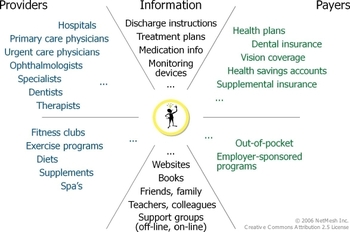
The electronic medical record can mean different things to different people. To Microsoft and Google among other Health 2.0 companies, it is a future of their business. To patients, it is concern over privacy and hope for improved care continuity. For medical providers it is an enormous added expense and a headache of technical details to do a job they are already performing.
But, the electronic medical record could also be a way to do business differently, to become more efficient. To do the job better. A couple things are certain: as health reform progresses the electronic record will prevail, and that it might not be so smooth. Just yesterday I read a news piece where electronic claims filing made it easier for Wal-Mart to recoup money paid in an injury settlement, effectively taking one woman’s health-trust and leaving her dependent upon the government for her care. Is this what we had intended when we first thought of the electronic records?
Radiology as a Benefit to Physical Therapist Practice
My personal experience with electronic medical records is with the military health system. It was sometimes slow and tedious, but it was incredibly useful all of the time. In fact, I have a hard time imaging practicing without an integrated medical record in front of me at this point.
Perhaps the most useful aspect of the military’s electronic system, which contrasts most significantly from usual physical therapist practice, concerns radiology reports. Forget for a moment the benefit that military physical therapists have in ordering radiographs (yes, they can order all types of radiographic imaging and may do so as effectively as orthopaedic surgeons) , and just consider the benefit of reading reports and viewing the radiographs themselves. I think this calls for a list:
1. Reduced guess work when patient history is unclear
2. A greater understanding of each patients pathology
3. Patient education opportunities are enhanced in front of their radiographs
4. Observation of what studies have been performed provide insight into thinking and problem solving of other providers
5. Improved prognosis decisions
The radiographic benefit is but one example. The overall message is that despite the many different particulars of the electronic medical record, it is somewhere we are heading. Careful consideration of the pitfalls and benefits of the process will ensure the efficient, timely transition.
ERIC








